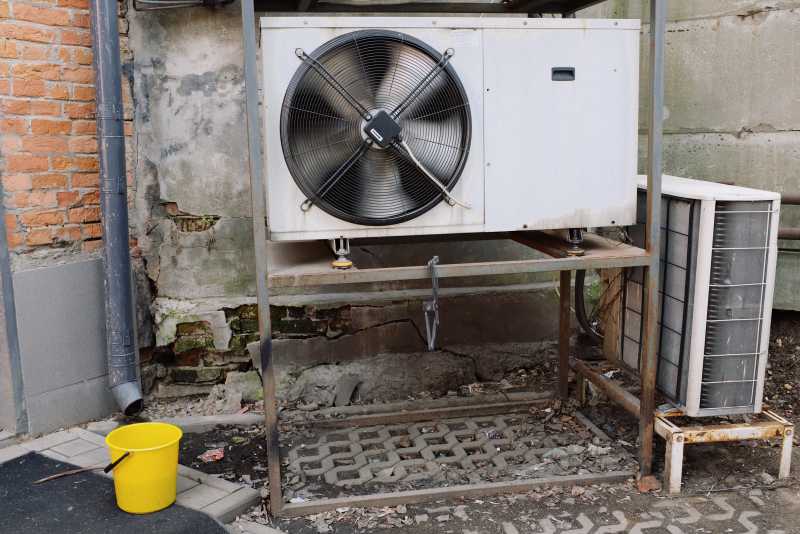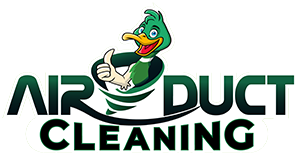Indoor air quality is a critical factor that directly influences our health and well-being. At Air Duct Cleaning, we understand the importance of maintaining a clean and healthy indoor environment. This is why we offer comprehensive services to clean your air ducts, enhancing the indoor air quality of your residential or commercial property. Our services are designed to mitigate the impact of indoor air quality on allergies. Poor indoor air quality can trigger allergies, cause respiratory issues, and lead to other health problems. It’s not just about dust and dirt; allergens, mold spores, pet dander, and other pollutants can accumulate in your air ducts over time, compromising the air you breathe. By investing in professional air duct cleaning services, you can significantly reduce these allergens and breathe easier. Let’s delve deeper into understanding the impact of indoor air quality on allergies and how our services can help you maintain a healthier indoor environment.
Understanding the Connection between Indoor Air Quality and Allergies

Indoor air quality plays a significant role in the development and exacerbation of allergies. Poor air quality, laden with allergens such as dust mites, pet dander, mold spores, and pollen, can trigger allergic reactions in sensitive individuals. These allergens, when inhaled, can cause symptoms ranging from sneezing, runny nose, and itchy eyes to more severe reactions like asthma attacks.
According to the Environmental Protection Agency (EPA), indoor air can be two to five times more polluted than outdoor air. This fact underscores the importance of maintaining good indoor air quality, especially for allergy sufferers. Regular cleaning and maintenance of air ducts can significantly improve indoor air quality.
- The process of air duct cleaning involves removing dust and other contaminants from the ductwork of your heating and cooling system. This not only improves air quality but also enhances the efficiency of your HVAC system.
- It’s crucial to clean your air ducts regularly to prevent the accumulation of allergens. The frequency of cleaning depends on various factors such as pets, smoking habits, recent renovations, and local weather conditions.
However, it’s important to note that air duct cleaning alone may not completely eliminate allergies. It should be part of a comprehensive approach to allergy management, which includes reducing other sources of indoor allergens and maintaining a clean, healthy living environment.
In conclusion, understanding the connection between indoor air quality and allergies is crucial for managing allergic symptoms and improving overall health. Regular air duct cleaning is a key component of maintaining good indoor air quality.
Common Indoor Air Pollutants that Trigger Allergies

Indoor air quality significantly affects allergies, with several common pollutants acting as triggers. Dust mites, a prevalent indoor allergen, thrive in warm, humid environments and are often found in bedding, upholstery, and carpets. Regular cleaning and the use of air purifiers can help reduce their presence. Pet dander is another common allergen that can cause allergic reactions. Even homes without pets can have dander, as it can be brought in on clothing. Regular vacuuming and air purification can help manage this allergen. Mold spores, which thrive in damp areas, can also trigger allergies. Ensuring proper ventilation and controlling humidity can help prevent mold growth.
Tobacco smoke is a major indoor air pollutant that can exacerbate allergies. It’s crucial to maintain a smoke-free environment to improve indoor air quality. Volatile Organic Compounds (VOCs) emitted from household products like paints, varnishes, and cleaning supplies can also trigger allergies. Using products with low or no VOCs and ensuring good ventilation can help reduce exposure.
Regular air duct cleaning can help improve indoor air quality by removing accumulated dust, mold, and other allergens. It’s important to understand how often air ducts should be cleaned to maintain a healthy indoor environment. For more information on indoor air quality and allergies, visit our blog.
The Role of Ventilation in Controlling Indoor Allergies
Ventilation plays a crucial role in controlling indoor allergies by improving indoor air quality. Proper ventilation helps to reduce the concentration of allergens in the air, such as dust mites, pet dander, and mold spores, which are common triggers for allergies. By ensuring a continuous flow of outdoor air into the home, ventilation dilutes the allergens and removes them from the indoor environment.
However, not all ventilation methods are equally effective. For instance, opening windows can sometimes introduce outdoor allergens, such as pollen, into the home. Therefore, it’s important to use controlled ventilation methods, such as exhaust fans and whole-house ventilation systems, which can effectively filter out allergens while bringing in fresh air.
Moreover, regular air duct cleaning is essential to maintain the effectiveness of your ventilation system. Over time, allergens can accumulate in the air ducts and get circulated throughout the home when the system is in operation. By keeping the air ducts clean, you can prevent this from happening and improve the overall indoor air quality.
In addition, it’s important to know how often should air ducts be cleaned to ensure optimal performance of your ventilation system.
Lastly, if you’re unsure about the state of your air ducts, you can refer to this guide on how to tell if air ducts need cleaning. By taking these steps, you can effectively control indoor allergies and improve the health and comfort of your indoor environment.
The Impact of Humidity on Indoor Air Quality and Allergies

Humidity plays a significant role in indoor air quality, which in turn, can have a profound impact on allergies. High levels of humidity can create a conducive environment for the growth of mold, mildew, and dust mites, all of which are common allergens. These allergens can trigger symptoms in individuals with allergies or asthma, such as sneezing, coughing, and difficulty breathing.
On the other hand, low humidity levels can also negatively affect indoor air quality. Dry air can cause the mucous membranes in the respiratory system to dry out, making individuals more susceptible to allergens. Additionally, it can increase the concentration of pollutants in the air, such as dust and pet dander, which can trigger allergic reactions.
Maintaining an optimal level of humidity in your home is crucial for good indoor air quality and to keep allergies at bay. This can be achieved through various methods, such as using dehumidifiers or humidifiers, depending on the need, and ensuring proper ventilation.
Regular air duct cleaning can also help in improving indoor air quality by removing accumulated dust, mold, and other allergens from the ducts. It’s important to know how often should air ducts be cleaned to maintain a healthy indoor environment.
Moreover, it’s essential to be aware of the indicators that your air ducts need cleaning to take timely action. In conclusion, understanding the impact of humidity on indoor air quality and allergies can help in creating a healthier living environment.
How Air Purifiers Can Improve Indoor Air Quality and Reduce Allergies
Indoor air quality significantly impacts allergies, and one effective way to enhance it is by using air purifiers. These devices work by filtering and purifying the air, removing allergens such as dust, pollen, and pet dander that can trigger allergic reactions. They also eliminate other pollutants like smoke and volatile organic compounds, contributing to a healthier indoor environment.
Air purifiers are particularly beneficial for individuals with respiratory conditions or weakened immune systems. They can help reduce the frequency and severity of allergy symptoms, leading to improved health and quality of life. However, to maintain their effectiveness, these devices need regular maintenance, including filter changes.
In addition to using air purifiers, regular air duct cleaning can significantly improve indoor air quality. Over time, air ducts can accumulate dust, mold, and other allergens, which can then be circulated throughout the home. Regular cleaning can prevent this, further reducing allergy symptoms.
Moreover, understanding when your air ducts need cleaning is crucial. Signs may include increased dust in the home, worsening allergy symptoms, or visible mold in the ducts. If you notice these signs, it may be time to schedule a cleaning.
In conclusion, air purifiers and regular air duct cleaning can significantly improve indoor air quality and reduce allergies. For more information on maintaining a healthy indoor environment, visit our blog.
The Importance of Regular Cleaning to Minimize Allergens
Maintaining a clean indoor environment is crucial in reducing allergens and improving air quality. Regular cleaning of your home, particularly the air ducts, can significantly minimize allergens that trigger or exacerbate allergies. Air ducts can harbor dust, pollen, pet dander, and other allergens, which can circulate throughout your home when the heating or cooling system is in use. By ensuring that your air ducts are clean, you can improve the indoor air quality and reduce the risk of allergies.
Air duct cleaning involves removing dust and contaminants within the ductwork. This includes the supply and return air ducts as well as the registers in each room. A professional air duct cleaning service, such as Air Duct Cleaning, uses specialized tools and high-powered vacuums to clean the air ducts thoroughly. This process not only improves the air quality but also enhances the efficiency of your HVAC system.
However, it’s essential to understand how often should air ducts be cleaned. While there’s no one-size-fits-all answer, a good rule of thumb is to have them cleaned every three to five years. If you or someone in your home has severe allergies, you may want to consider cleaning them more frequently.
In conclusion, regular cleaning of your air ducts is a crucial step in minimizing allergens and improving indoor air quality. By investing in professional air duct cleaning, you can breathe easier and live healthier.
Tips for Maintaining Good Indoor Air Quality to Prevent Allergies
Indoor air quality significantly impacts allergies, and maintaining good air quality is essential for preventing allergic reactions. One of the most effective ways to ensure good indoor air quality is regular air duct cleaning. Over time, dust, allergens, and other pollutants can accumulate in your air ducts, which can then circulate throughout your home and trigger allergies. By having your air ducts cleaned regularly, you can significantly reduce the amount of allergens in your home. To understand more about the process, visit our page on how air duct cleaning works.
In addition to regular cleaning, it’s also important to monitor the condition of your air ducts. If you notice signs of mold, dust buildup, or pest infestations, it may be time for a cleaning. Our guide on how to tell if air ducts need cleaning can help you determine when it’s time for a professional cleaning.
Finally, investing in a good air purifier can also help improve indoor air quality. Air purifiers can remove allergens and other pollutants from the air, helping to prevent allergic reactions. However, it’s important to remember that air purifiers are not a substitute for regular air duct cleaning. For more information on the importance of air duct cleaning, check out our blog. By following these tips, you can maintain good indoor air quality and help prevent allergies.
In conclusion, the quality of indoor air plays a significant role in triggering or exacerbating allergies. Poor indoor air quality, laden with allergens such as dust mites, pet dander, mold spores, and pollen, can lead to a range of allergic reactions, from mild symptoms like sneezing and itching to severe conditions like asthma. Therefore, it is crucial to maintain good indoor air quality by regularly cleaning and ventilating our homes, using air purifiers, and controlling humidity levels. By taking these steps, we can create a healthier living environment and significantly reduce the risk of allergies, enhancing our overall well-being.





